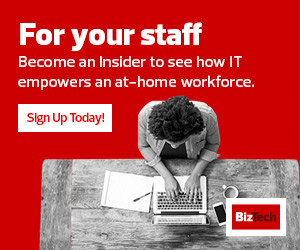What if your business could get paid faster? What if you, as a consumer, could more easily and instantly pay your bills? What if businesses and consumers could more effectively manage payments in real time, with more payment options universally available?
“We need a system where anyone can pay anyone,” said Connie Theien, senior vice president of payments industry relations for the U.S. Federal Reserve. Sure, people have options: They can pay with credit cards or even with their phones, and they can transfer money to friends with services like Venmo. But none of those solutions is universal; inevitably, some people are left out, some businesses decline to participate and transactions are slowed or even canceled.
Speaking at MoneyFest, an event sponsored by the financial services industry organization Money20/20 that runs virtually through Oct. 29, Theien said broader reach is one of the vital components of a more thoroughly digitized payment system, in addition transaction to speed.
“There are lot of payment innovations today, but the challenge for consumers is that you have to participate in that network,” Theien said. “Achieving that ubiquity is important to deliver value for businesses. There are a lot of closed-loop networks out there.”
FedNow Will Broaden Make Instant Payments Easier in the U.S.
The Fed is perfectly positioned to help deliver that kind of ubiquity, Theien said, because its network reaches 10,000 financial institutions. That’s why it has been working on its own instant payment infrastructure, called the FedNow Service, which it hopes to deliver by 2024. FedNow will enable financial institutions across the U.S. to provide safe, efficient instant payment services in real time.
Through financial institutions participating in FedNow, businesses and individuals will be able to send and receive instant payments conveniently, and recipients will have full access to funds within seconds, giving them greater flexibility to manage their money and make time-sensitive payments.
“We think we can be a big part of delivering that piece of value to businesses,” Theien explained.
That’s critical right now, said Ken Kruszka, CEO of fintech company SnapCheck, because with the exception of large corporations, most U.S. businesses seem unaware of the potential for the digitized payment infrastructure that typically goes by the term “faster payments.”
“We’re very much in the infancy of faster payments in the U.S.,” Kruszka said, “even though much of the world has been there for a decade or more. It’s a mixed bag. When you talk to some of the larger corporates, they are very excited about the potential that faster payments have for their business, both on the payables and receivables. But the SMBs — it’s sad to say, but most of them really aren’t aware of what faster payments really are. They’re busy doing their day jobs and aren’t really aware of what this whole revolution in payments can do for them.”
MORE FROM BIZTECH: How data analytics is helping banks make smarter decisions.
Simplification of Payment Is Vital to Businesses
Perhaps more important than speeding transactions — which is itself a vital advantage given the cash flow challenges common for small and midsized businesses — another benefit of a digitized payment system is process simplification and opportunities for automation in the accounting process, Theien explained.
“When businesses talk about their pain points with payments, one of the first things they talk about is the need for that end-to-end, straight-through processing, electronification and seamlessness,” she said. That digitization can provide “the data in the payment message,” which “can help to tie in the invoicing process, the remittance and reconciliation — all the processes that today create a lot of cost and inefficiency.”
Most businesses are small businesses, Kruszka said, and small businesses don’t have time to think hard about accounting. They’re in search of technology solutions that give them more insight over their finances while at the same time making it all easier to manage. “If they’re lucky enough their banks can help them in some regards, but they’re looking for help,” he said. “They don’t want to think about it; they want the problem to disappear. ‘Take the problem away. I’m busy doing my business and this is a necessary evil of my business, not a core competence.’”
The various intermediaries that exist in the payment system need to “be able to participate in a meaningful way in order to provide that end-user value of making payments easy, convenient, quick and trouble-free for end users, and we need to bring together the whole village to make that happen.”











